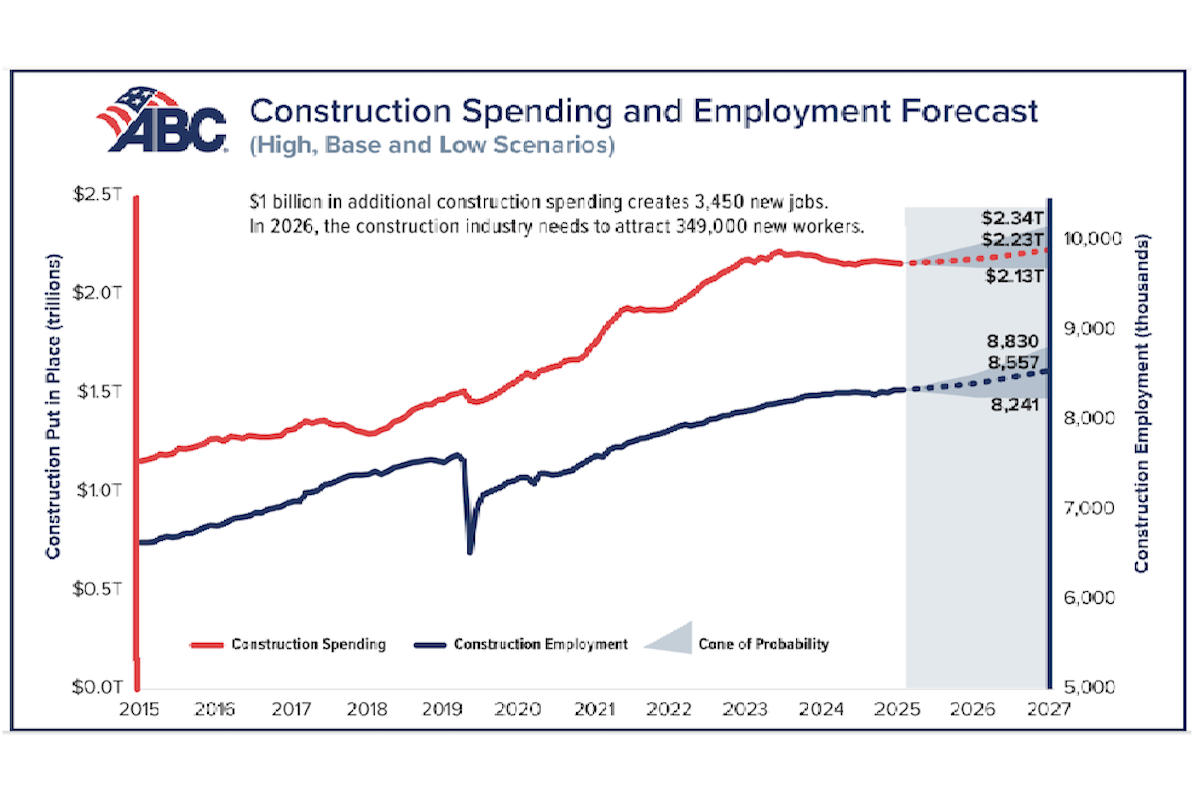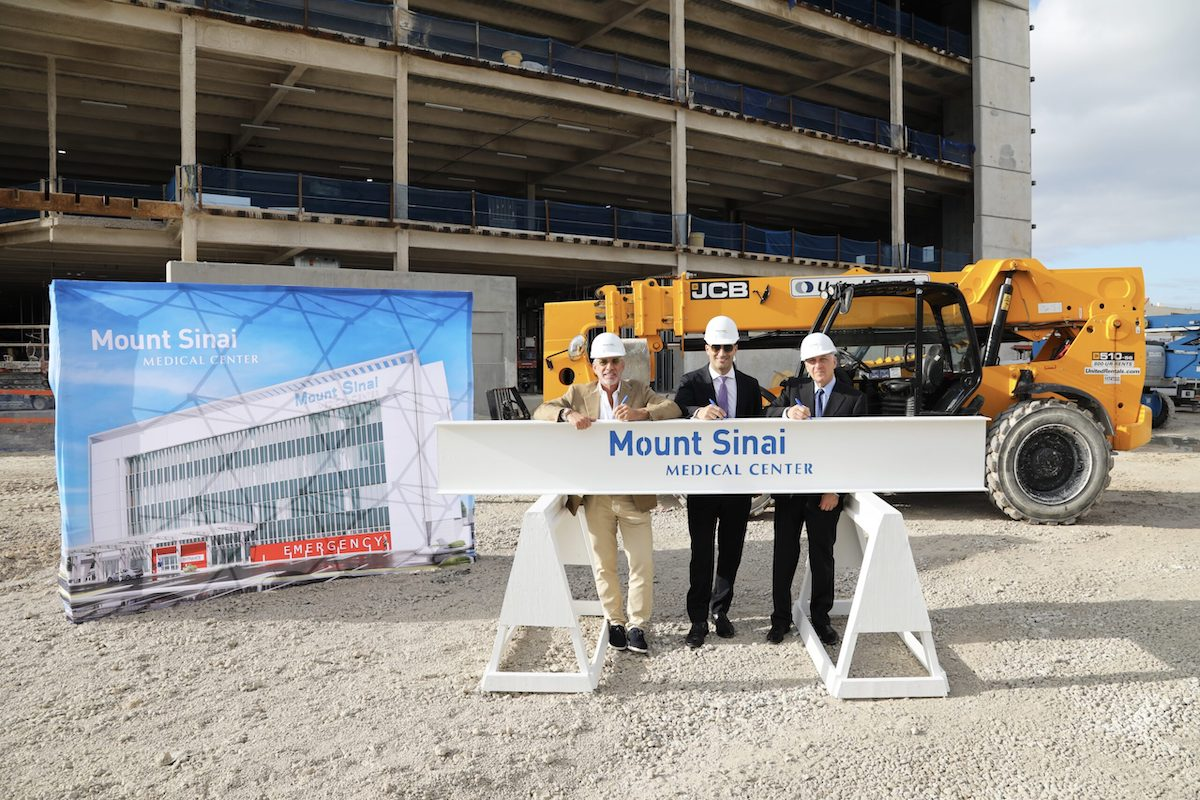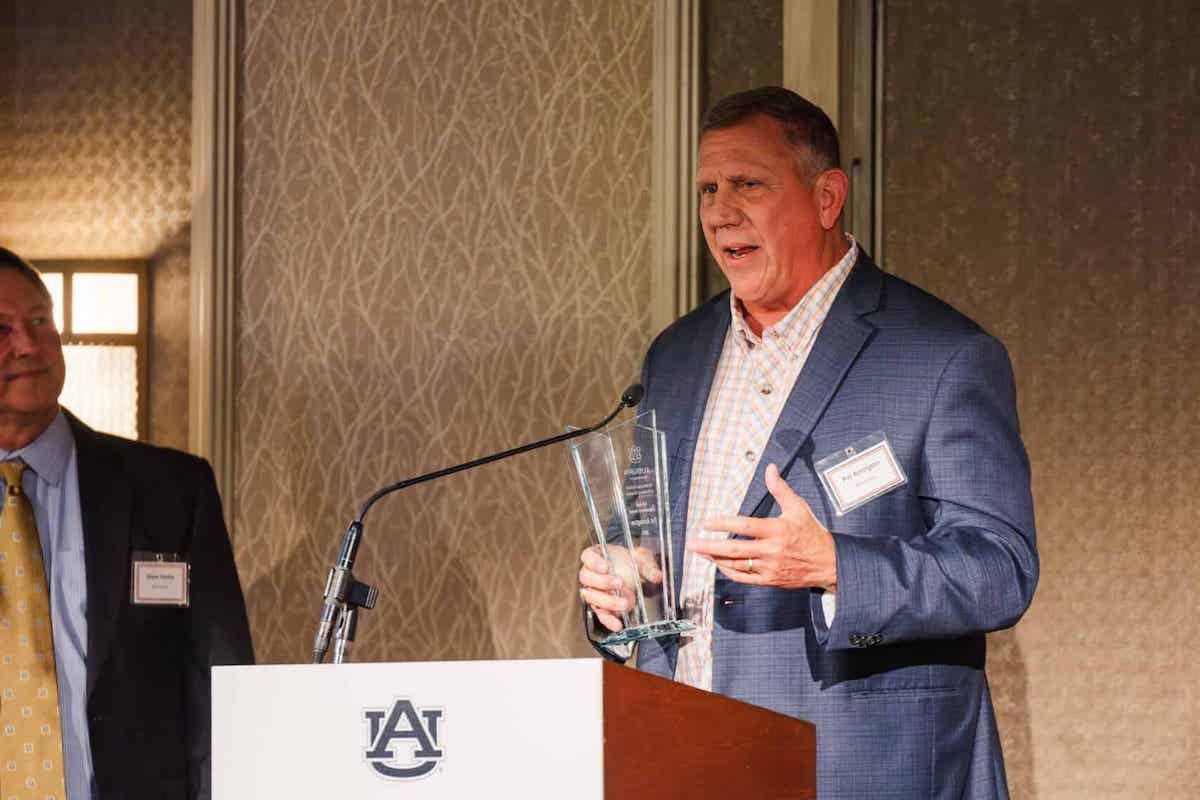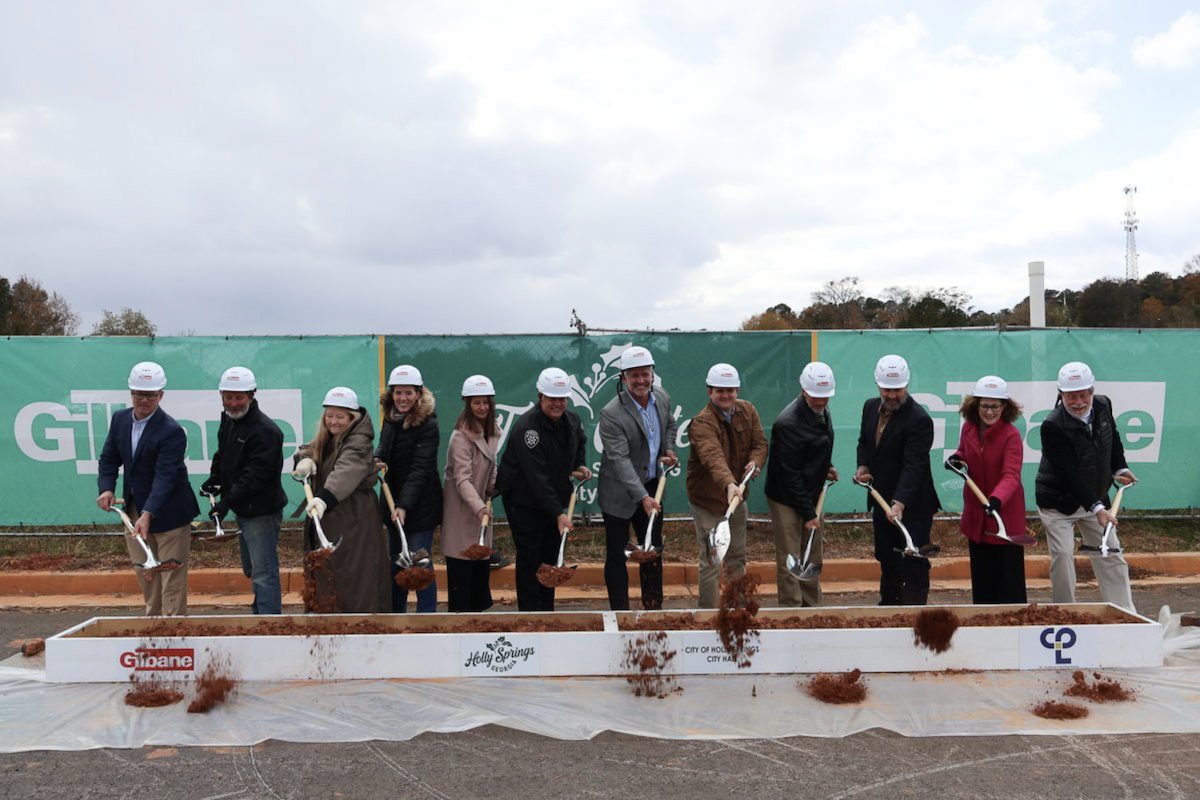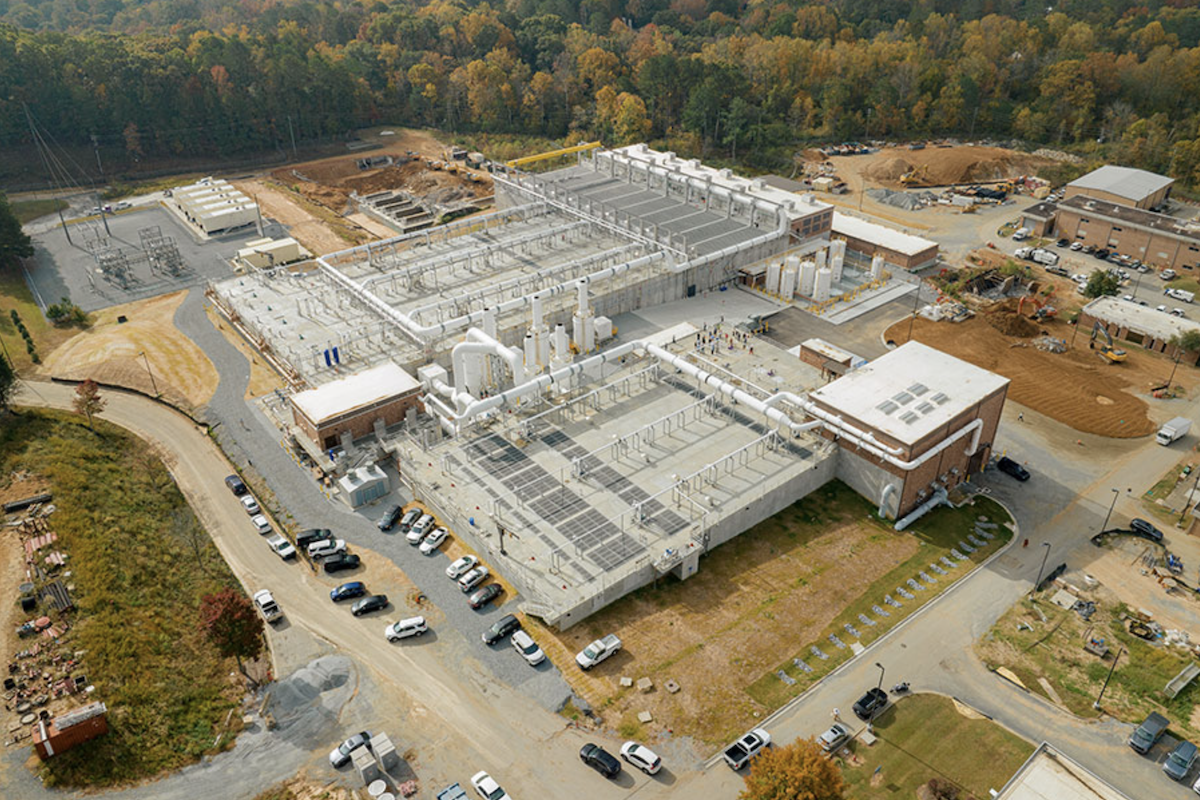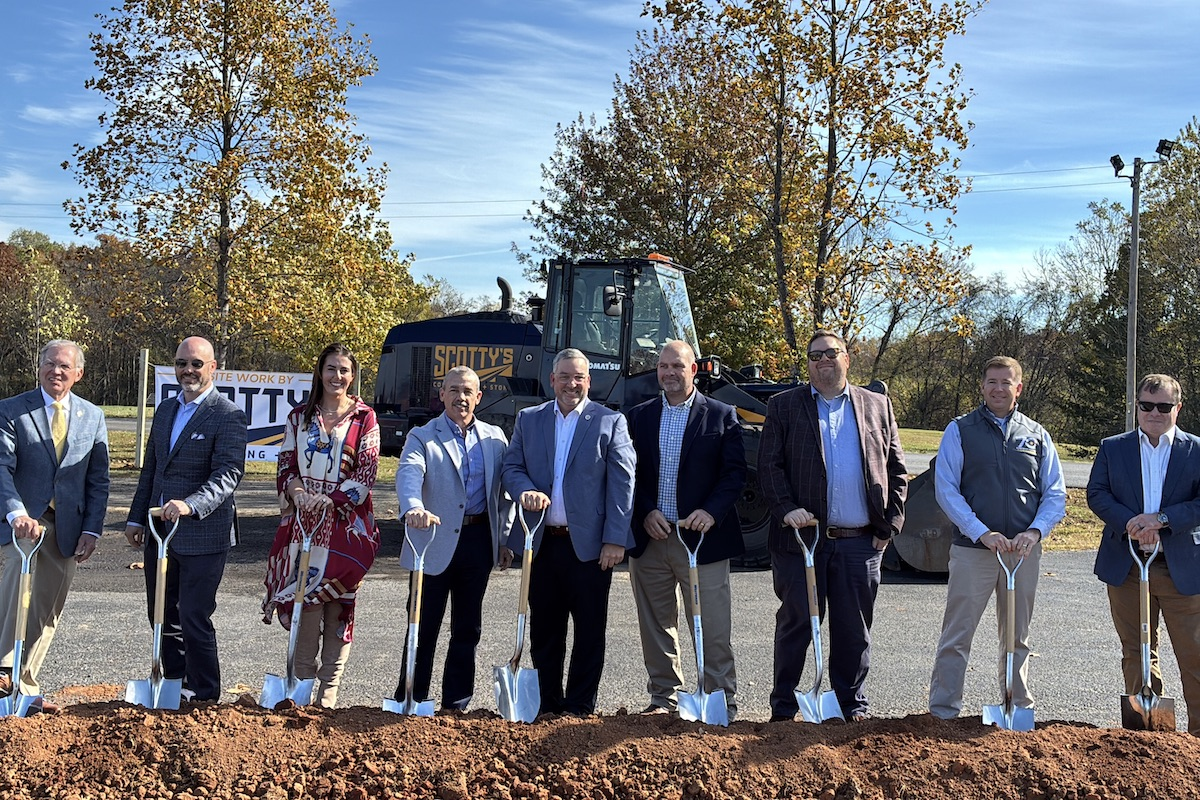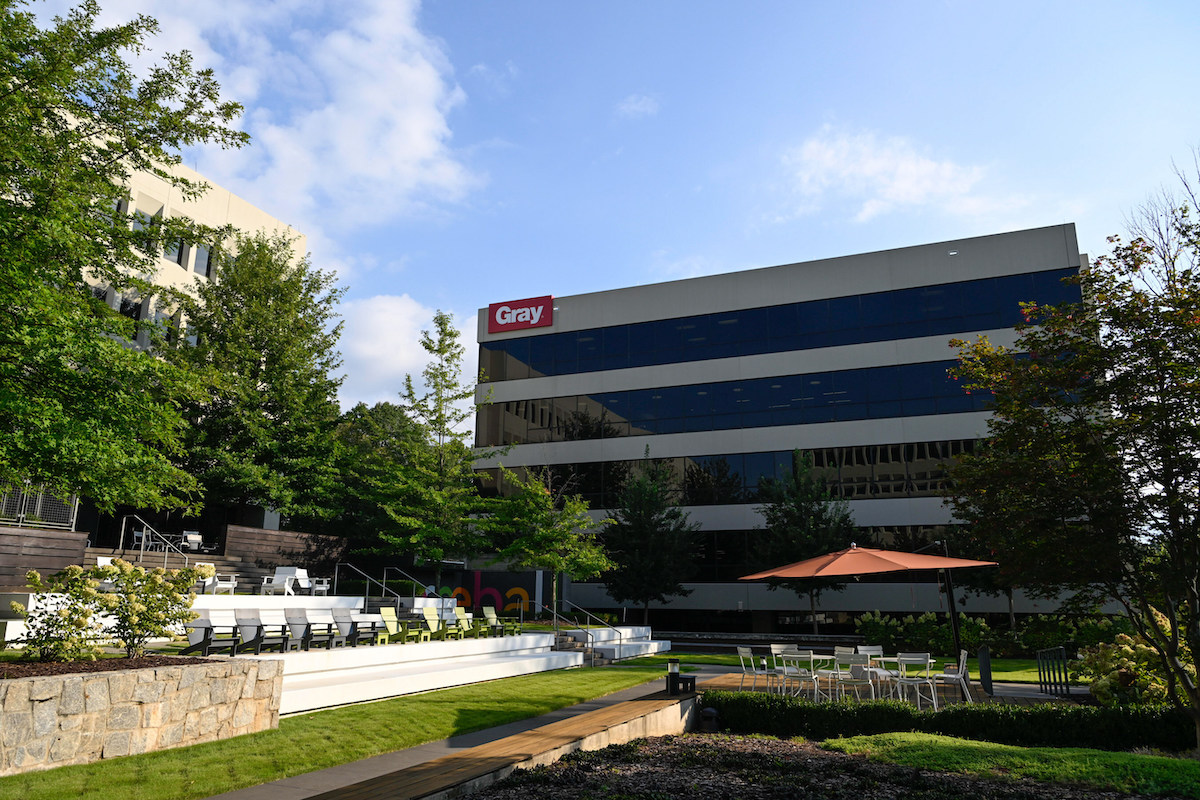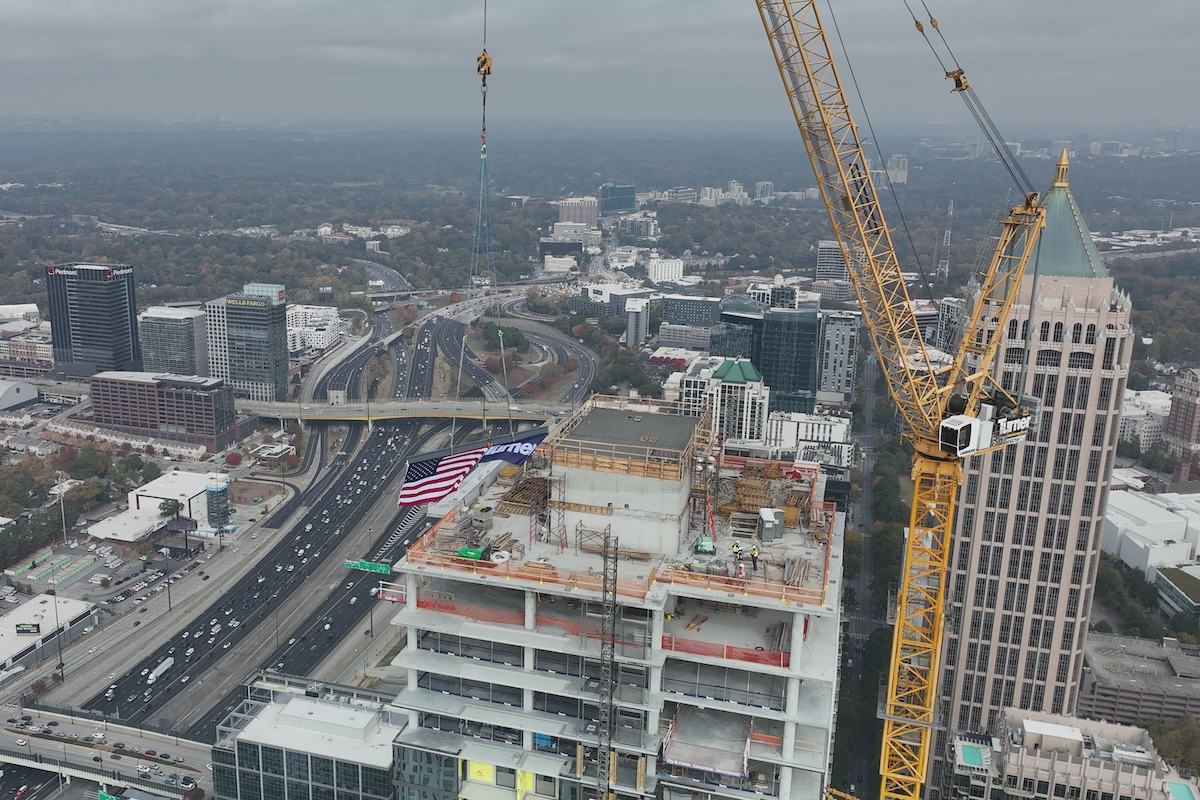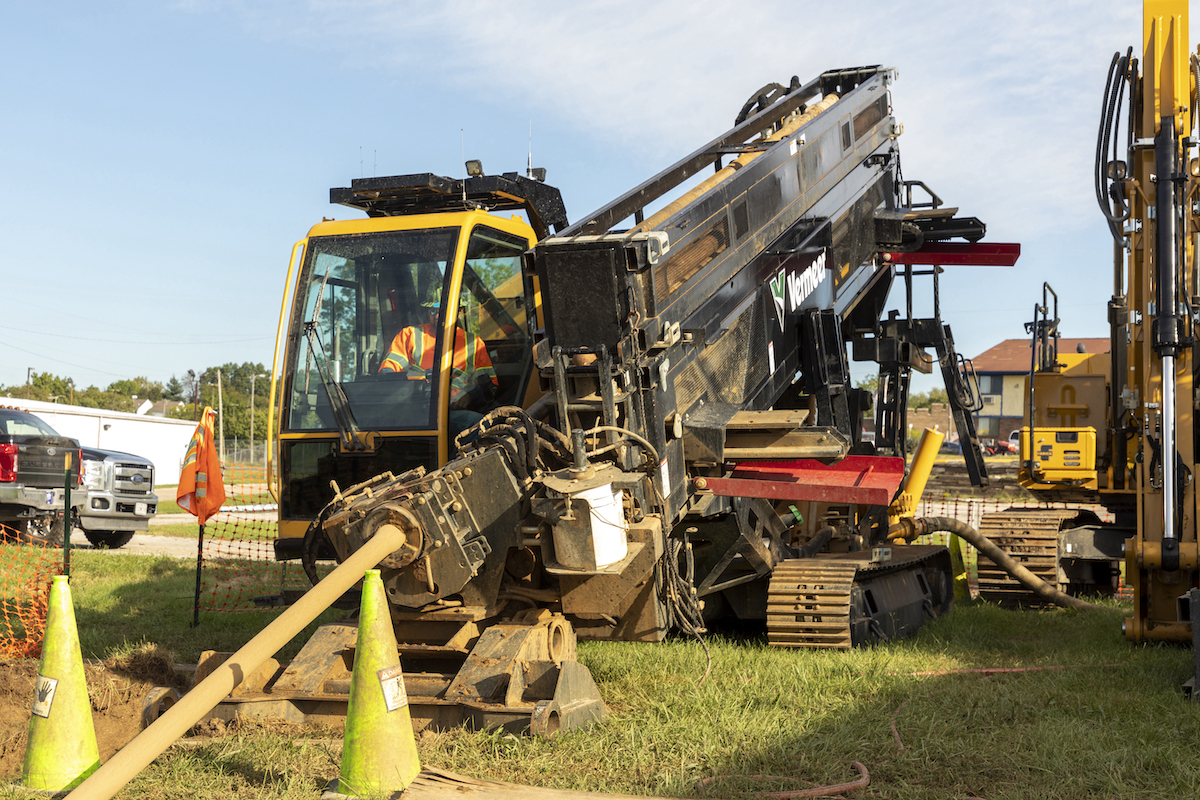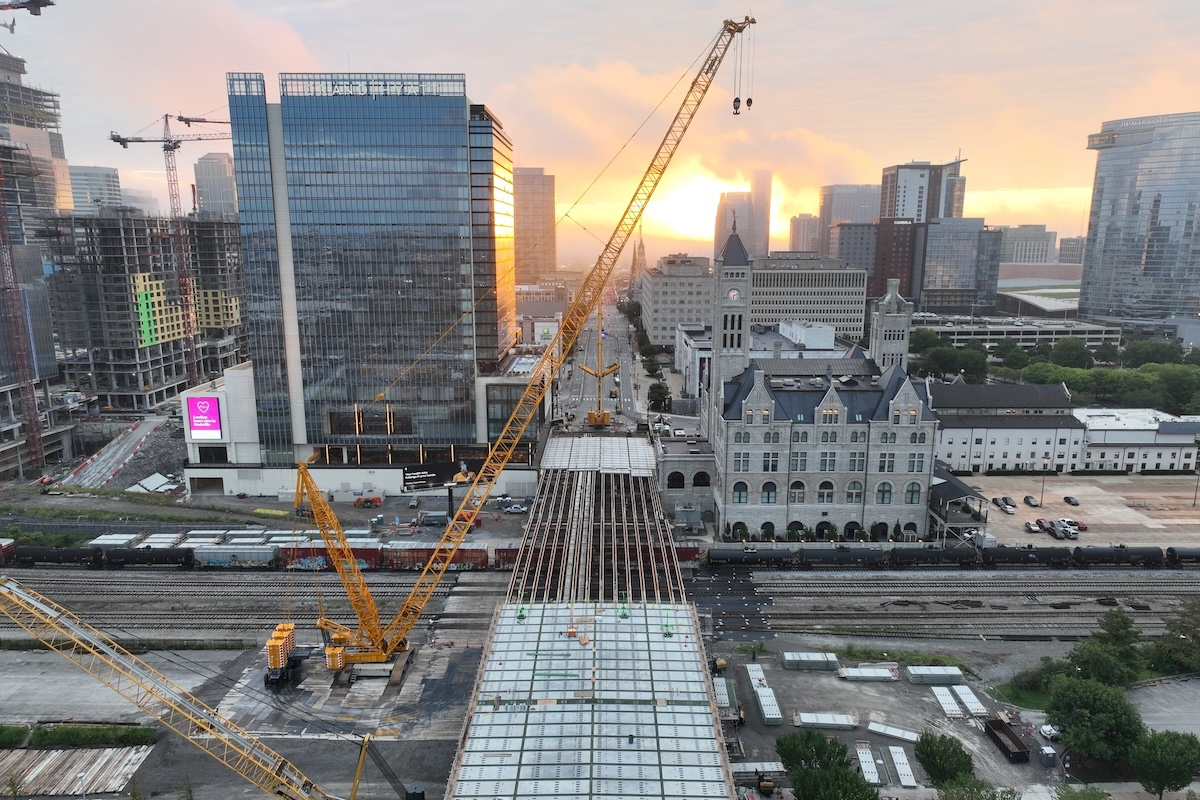Throughout the four days of meetings and knowledge sessions, attendees shared stories about joint challenges, best practices, and their own innovations — insights not just for those designing the projects but also for the contractors building them.
First, Ken Simonson, Chief Economist for the Associated General Contractors of America, stressed the importance of educating people that construction “isn’t just dirty, dangerous, dead-end jobs. You play with cool tools, you build iconic stuff that you can point out to your friends and family, and you can start at the lowest level and become a CEO or owner of a company.”
The Wage Premium
Of course, wages play a part in attracting and keeping industry workers.

| Your local Gomaco dealer |
|---|
| Ring Power Corporation |
“Construction has always been a hard sell,” Simonson said. “You have to work outdoors in all kinds of weather and be on the job earlier than I like to get up in the morning. So to get workers, the industry has always paid what I call a wage ‘premium.’”
In his “Construction Wage ‘Premium’ Versus Total Private Sector” chart, Simonson compared the average wages for construction craft and office workers who are not supervisors to the average hourly earnings for production workers in the total private sector. From 2000 to 2019, the premium for construction wages averaged 21.5 percent.
When the pandemic hit and more people ordered delivery of food and other goods, “Warehouses and delivery companies and restaurants dramatically increased their starting pay in order to get workers to fulfill those jobs,” Simonson said. “The premium shrank sharply — not because construction cut its wages, but because the floor came up so much on the all-industry average hourly earnings.”
Over the last few years, construction pay has risen faster than the total private sector. For instance, from March 2023 to March 2024, average hourly earnings for production workers in construction went up almost 5 percent, compared to just over 4 percent in the private sector.
“While the premium is up to 19 percent, it’s well below where it was before,” Simonson said.
However, “I think it’s going to have to go even higher,” he said. “Now so many jobs can be done on a remote or hybrid basis with flexible hours — things that still aren’t possible for onsite construction jobs — so I think the industry is going to have to do even more to get workers.”
In addition, because construction is more unionized than the rest of the private sector, new contracts will affect average wages.
“A lot of union contracts signed three or four years ago held wage increases very low at 2 or 3 percent,” Simonson said. “As those expire and are renegotiated this year, we’re seeing 4 and 5 percent increases, so that’s going to push that average up.”
Culture of Belonging
Beyond wages, Jeff Pelton, Assistant Secretary of Finance and Administrative Services for the Washington State Department of Transportation (WSDOT), shared initiatives his organization undertook over the last few years to mitigate the labor shortage.
“We looked at some external factors that contribute to our situation,” Pelton said. “Some of them are very thematic, like the pandemic, and are relevant to all of us. We had a pretty huge dip in 2021-2022. We know that leisure and hospitality entities got hit the hardest, but second behind them are the industries here.”
At WSDOT, the large number of vacancies prompted internal movement. “As we trickled through those promotions and transfers, we were left with the need to fill several hundred positions in a very short period of time,” Pelton said. “That exposed cracks in our pipeline, problems with our salary alignment, and training demands that far exceeded our previous cycles.”
Before the pandemic, Pelton said the average tenure in his organization hovered around 12 to 13 years. “Now we’re down to an experience factor of maybe six or seven years,” he said. “With that comes positives and negatives. You have a workforce that’s less experienced and less refined in your processes, but some of the benefits include new ideas and maybe more technically adept individuals coming to the organization.”
As WSDOT worked to fill their many open positions, they stressed how seemingly minor actions can make a difference. For instance, they tell hiring managers to be quick about recruitment.
“What we were finding at the beginning of the pandemic is the list [of candidates] would just sit there for a week or so because they’re super busy,” Pelton said. “But you’ve got to front-load that because if you wait seven days, that list is no good.”
In addition, “We’ve tried to diversify our pipelines,” Pelton said. “Traditionally, a maintenance series position is a second-career kind of individual who has their CDL. But oftentimes we’d lose them in the first five years, so we’ve taken a model where we reached out to market and tried to create brand loyalty and some loyalty with our training program.”
That includes WSDOT’s High School to Highways Program. “It allows individuals who are graduating high school to compete [for positions] and if they’re selected, we help them get their CDL,” Pelton said. “We give them the necessary safety and maintenance training for them to be successful and within a year or two they’re making over $50,000.”
Once WSDOT hires individuals, they address retention through mentorship, training, tuition reimbursement, and a deliberate culture of belonging.
Creating Diversity
John Drake, Vice President for Transportation, Infrastructure, and Supply Chains for the U.S. Chamber of Commerce, shared what he feels is the best solution to labor challenges — although it’s unfortunately outside of the industry’s control.
“First and foremost, what we need to be looking at is immigration reform across the board,” he said. “We simply do not have enough workers in our system today. We’re not going to get there unless we start bringing in more workers and more people who can fill these jobs today because it’s not present in the workforce here in the United States — either because they’re aging out or choosing other jobs.”
Ultimately, “Until Congress steps up and fixes that, we’re going to be talking about a lot of individual efforts we’re taking to try to essentially make marginal improvements,” he continued. “Until you fix the immigration problem, you’re really not going to have the solution that you need.”
That being said, Drake pointed out steps that can be beneficial for recruitment.
“This new generation coming up, they want to feel like they’re working for something they can believe in,” he said. “Diversity and equity are very important values for them. I think it’s created an opportunity for [firms] to change the way they’re telling their stories to these new workers.”
For instance, in the last 10 years, the trucking industry increased the representation of African Americans and Asians in its workforce by 30 percent, resulting in approximately 48.2 percent of today’s driving workforce that would be considered nonwhite, Drake said.
Fifteen years ago, approximately 7 percent of the driving workforce was women and that’s increased to about 12.7 percent, he added. But that’s only the first part.
“What we need to do is make sure that the people who are coming on board stay on board,” Drake said. “If you’re a younger woman who’s coming on, you want to have people who are like you, who are going to mentor you, who you feel like you have a community with. And if you don’t see that where you’re working, there’s going to be a higher inclination for you to move on elsewhere.”
In addition to those efforts, a session titled “Measuring Miles: Gauging Growth and Gains Through the Infrastructure Investment and Jobs Act” allowed panelists and audience members to share ways they can measure and quantify achievements made possible by IIJA funding to maximize long-term strategic benefits.
Inflation Offset
During the session, Chris Peoples, Chief Operating Officer for the North Carolina Department of Transportation, noted that in his state, IIJA funding provided a boost of more than $450 million over previous years’ formula allocations. At the same time, the state legislature enacted a historic sales tax transfer that this year should equate to about $650 million. However, most of that gain was eaten up by the rising cost of materials and labor.
“Without IIJA, we would be in a world of hurt when it comes to cost escalation and inflation,” said Shante Hastings, Deputy Secretary and Chief Engineer for the Delaware Department of Transportation.
“From Ohio’s perspective, it’s really allowed us to keep our program pretty much intact,” said Dave Slatzer, Chief Engineer and Assistant Director of Transportation Policy for the Ohio Department of Transportation.
In addition to the rising cost of materials and labor, one audience member commented that profits had been coming out of contractors’ project bids and now we’re seeing some recovery — and if those adjustments aren’t made, some contractors would go out of business. The panel agreed that despite the pain of those increases, they need contractors to be successful in order for their departments to succeed.
Another audience member pointed out how the increased funding from IIJA helped small and Disadvantaged Business Enterprises grow.
“Building a model that can work with small and minority-owned businesses to help augment what’s out there will create a healthier sub industry,” said Moderator Shawn Wilson, Senior Vice President and National Agency Coordination Leader for Transportation and Infrastructure at WSP, the session’s sponsor.
New Opportunities
Panelists also shared the new project possibilities created by IIJA — despite the hoops they sometimes need to go through to receive funding. For instance, IIJA’s competitive grant programs allow states to compete for funds for megaprojects that might not otherwise get done. That process creates beneficial collaborations with neighboring states, railroads, and other partners.
In addition, “The creation of some of the new programs really helped in some of the areas that maybe we’ve historically had to underinvest,” Slatzer said.
He specifically pointed to the Promoting Resilient Operations for Transformative, Efficient, and Cost-Saving Transportation (PROTECT) Grant program, which provides funding to ensure surface transportation’s resilience to natural hazards, and the National Electric Vehicle Infrastructure (NEVI) Formula Program.
With those dedicated federal funding sources, “We were able to then move funds and address some of the other needs and challenges we had throughout the state,” Slatzer said.
Similarly, in Delaware, “The dedicated bridge funding freed up money that we were spending on bridges,” Hastings said. “Having that dedicated funding then allowed us to bump up things like safety.”
Garrett Eucalitto, Commissioner of the Connecticut Department of Transportation and AASHTO’s current Vice President, talked about IIJA’s competitive discretionary rail program.
“There’s been no formula funding for that type of investment — ever,” he said. “We have movable bridges [in Connecticut] that are 120 years old, and they’re breaking and shutting down the entire northeast corridor.”
The ability to compete for those grants allowed needed projects to proceed. “I don’t know how our state would be able to do them otherwise,” Eucalitto said. “We’d have to cannibalize our entire highway bridge program to pay for these rail infrastructure investments, because if we don’t fix those bridges they’re coming down. We’d have no other choice.”
Going forward, Wilson stressed the importance of quantifying the results of IIJA-funded work to demonstrate economic and quality of life benefits that can increase the chances of transportation funding reauthorization at the same or higher levels in 2026.
During AASHTO’s Spring Meeting, coalition members presented the initial findings and recommendations from their soon-to-be published white paper.
Sandy Hertz, Director of the Office of Climate Change, Resilience, and Adaptation for the Maryland Department of Transportation, began by sharing that costs associated with large-scale natural disasters driven by the dynamics of a changing climate are estimated at $460 billion between 2017 and 2019.
The panel stressed the cost savings of building for resiliency versus recovering from an event — in other words, rebuilding a damaged road can be much more expensive than “hardening” it before an event so it’s better able to withstand a disaster. But determining where and how to spend dollars is the challenge.
Risk Management
Hertz outlined multiple options for addressing resilience in transportation facilities.
“It doesn’t mean you have to raise your road 6 feet,” she said. “It could also mean that you build the road to be able to withstand an acute event and it’s able to allow the water to go over the road then flush back out. Maybe it’s changing the way you design the bridges to allow for better drainage during storm surge events. Hardening everything is not always the fix that you’re looking for.”
Aimee Flannery, Global Technology Leader – Transportation Risk and Resiliency at Jacobs, likened the situation to 40 years ago when the Highway Safety Improvement Program began and there was a need to determine high-risk areas for safety investments.
“That could be a very good model for us as an industry to follow for resilience,” she said. “Can we look at it from a systems perspective? Maybe not everything has to be built to the same hard standards, but we look at criticality and how that might play into selection of design standards.”
That approach takes into account risk tolerance, Flannery said. “Is it acceptable that a facility flood for eight hours? Do you have a redundant route? Is it something that’s critical in attaching hospitals to the community?”
What Next?
The coalition’s white paper identifies a need for additional federal guidance and standardization across the industry — starting with definitions of fundamental terms and extending to methods for risk assessment and valuation of resilience benefits to help prioritize projects.
The panel stressed that the white paper will remain a living document, updated based on continued experiences and input.
Photos courtesy of Wisconsin Department of Transportation.











